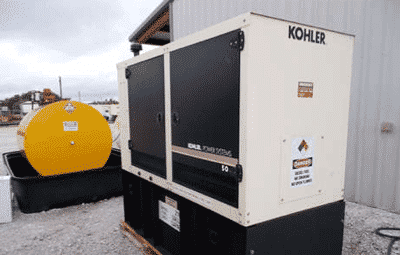Weathering the Storm: Protect Your Generator from Wind, Rain and Flood
How do you protect your generator from the elements?
2017 saw some of the most extreme weather North America, and indeed the whole world has seen in a long time. Rainfall amounts doubled and tripled in some places compared to recent years, and several states experienced severe flooding. Hardest hit areas include Mobile Alabama, New Orleans Louisiana, and Pensacola Florida; each experiencing record-breaking rainfall. States like Texas, Florida, California and the Carolina’s all experienced heavy flooding last year. New England and other parts of the Northeast weathered tremendous wind blasts in 2017. Many of us have read the news of the resulting catastrophic power failures resulting in loss of property, and even loss of life. 2018 wasn’t much better, so facilities managers and life safety officers need to ensure their mission-critical emergency power systems can hold up. So how can you protect your generator?
Placement
For generator sets installed out of doors, pad placement is the first and most important factor in safeguarding your generator from flooding. The property should be surveyed, and the highest possible ground should be chosen. The area should be level where the generator will be placed, with downhill grades leading away from the site to prevent standing water from accumulating under your unit.
Rental or portable generators should be removed from the soft ground frequently found at construction sites and other remote locations. The best practice would be to move these units to high, level ground with no history of flooding.
Although generators can weigh thousands of pounds, even tons, fast-moving flood waters can easily carry away this expensive life-saving equipment.
Enclosure
Known mostly for their sound dampening qualities, many generator enclosures are built to withstand extreme wind and rain. Beginning with their basic construction, enclosure manufacturers start with heavy-duty steel or aluminum for walls and floors. Stainless steel rivets, bolts, and handles combined with corrosion resistant coatings and paint inhibit rust and rot. Many enclosures feature a cambered roof, preventing dangerous water accumulation. Sound and Weather Proof enclosures employ non-hygroscopic sound insulating material; meaning the substrate will not absorb and retain water, preventing moisture buildup inside the enclosure. Air intake rain caps, adjustable inlet and outlet louvers, and downward angled exhaust tips prevent rain from getting inside of the engine, which can cause catastrophic failure.
2017’s weather events proved devastating for many, even fatal for some. Even now, legislation and new regulations are being voted on and passed in many industries to limit power failure and prevent loss of life. Be sure your facility has the best designed and implemented emergency back up power system and, if your generator is outside, take the extra steps to guarantee it will perform under the most extreme weather conditions.
For more information on how to protect your generator, and which generator is best for you, please feel free to call us at 610-658-3242!


